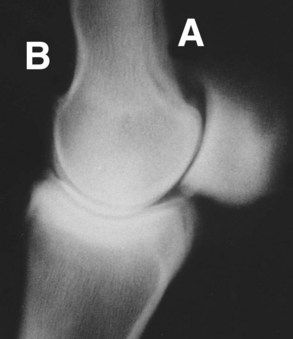Chapter 126Lameness in the Pony
Joint Disease
Osteoarthritis
Ponies develop osteoarthritis (OA) in similar joints as horses. However, many ponies have mild-to-moderate joint degeneration, are clinically sound, and perform to the level of the owner’s expectation (Figure 126-1). OA in ponies tends to be primary rather than secondary to a previous intraarticular condition, such as intraarticular chip fractures, OCD, osseous cystlike lesions, or ligamentous damage.




